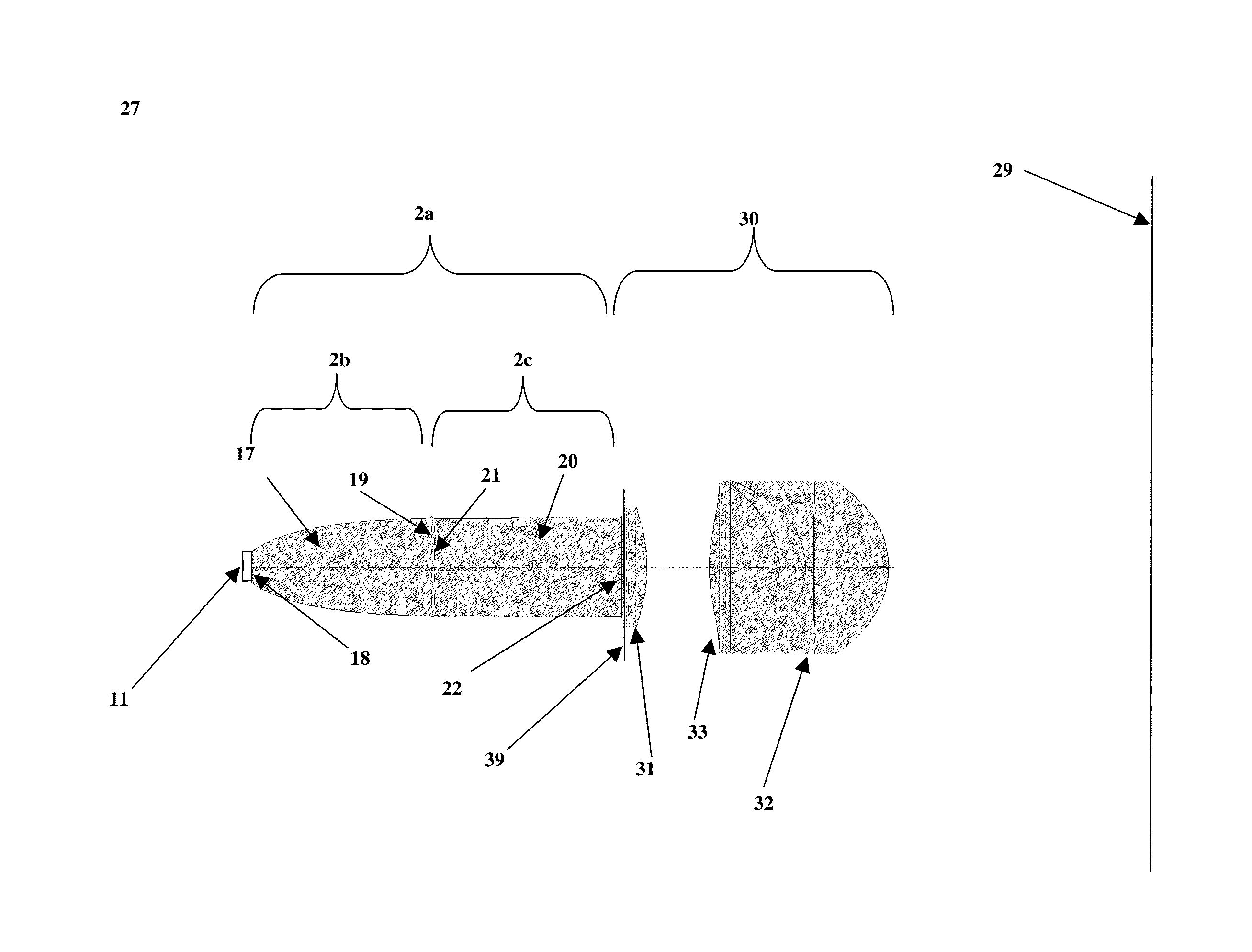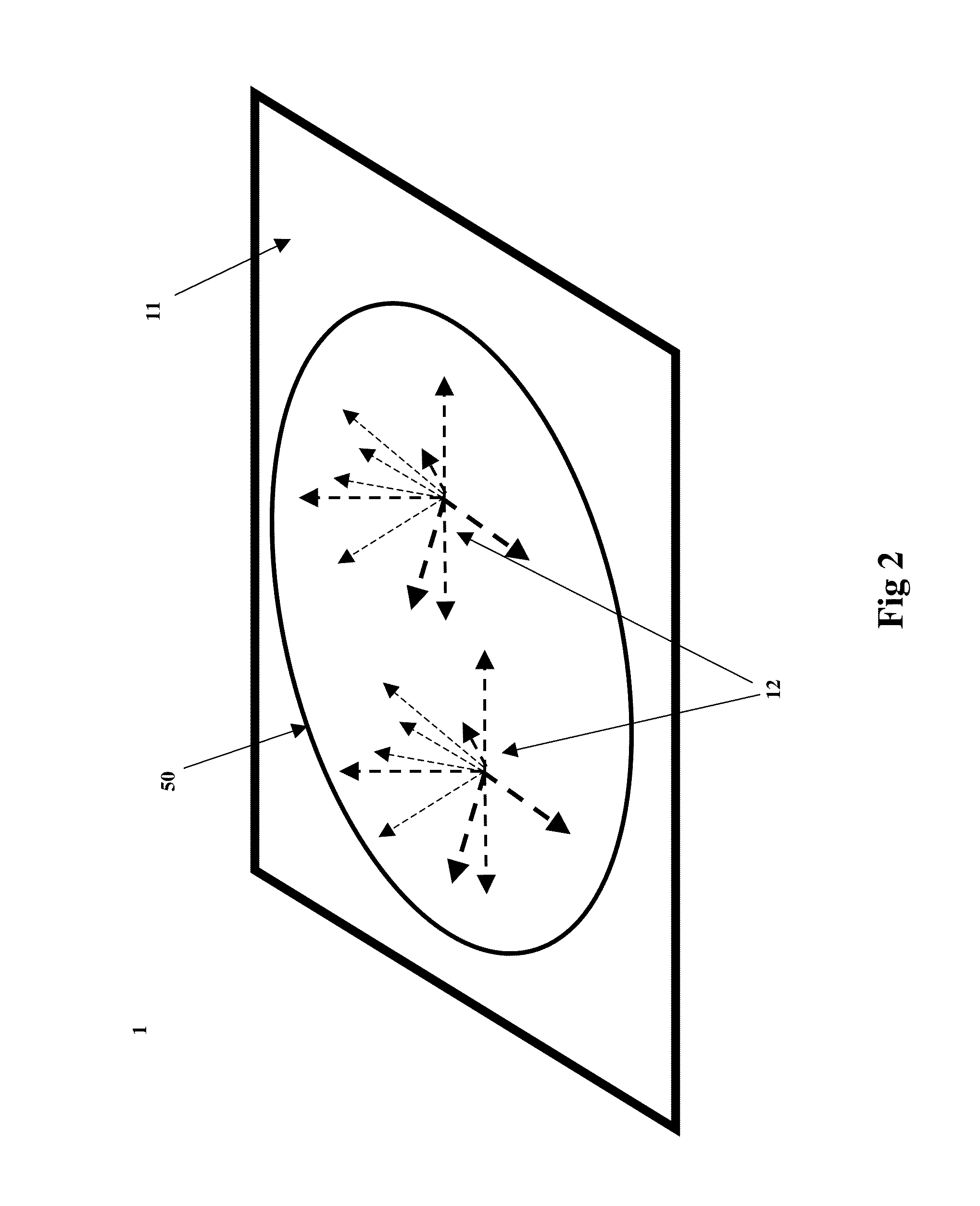High efficiency hybrid illumination system
a hybrid illumination and high efficiency technology, applied in the field of high efficiency hybrid illumination systems, can solve the problems of high cost and environmental hazards, cfls cannot be easily configured to produce beams of light, and the theoretical superiority of lumens per etendue unit has not been effectively utilized
- Summary
- Abstract
- Description
- Claims
- Application Information
AI Technical Summary
Benefits of technology
Problems solved by technology
Method used
Image
Examples
embodiment
Preferred Embodiment
[0054]FIG. 12 shows the hybrid optics illumination system 27 of the Preferred Embodiment. FIG. 12 shows a Lambertian emitter 11 comprising a warm white LED array, a NIO transform means 2a comprising a CPC first stage 17 and a cylindrical second stage 20, and a IO projection optics means comprising lens elements 31, 32, and 33. The optical prescription of this Preferred Embodiment is given in Table 1 in BEAM4 commercial lens design software format.
[0055]
TABLE 113IndexMCSZA2A3A4A5A6D---------------e--------e------------------E-------------e--------e-------e------E---------E--------PMMAM 1.915E−01 4.633E−02−6.115E+00 2.557E−02−4.435E−031.122E−04−3.973E−07−1.144E−0850.6PMMATIR 1.000E+12−2.292E−05−5.000E+0349.652PMMAL 0.000E+00 1.855E+0250.81I 0.000E+00 1.855E+0250.81L 0.000E+00 1.856E+0250.81L 1.880E+0260PMMAL−1.143E−02 1.980E+02601L 6.632E−02−9.934E−02 2.294E+02−2.759E−02 4.779E−0587PMMAL−1.628E−02 1.186E+00 2.644E+02−6.100E−03 4.555E−05871L−2.161E...
PUM
 Login to View More
Login to View More Abstract
Description
Claims
Application Information
 Login to View More
Login to View More - R&D
- Intellectual Property
- Life Sciences
- Materials
- Tech Scout
- Unparalleled Data Quality
- Higher Quality Content
- 60% Fewer Hallucinations
Browse by: Latest US Patents, China's latest patents, Technical Efficacy Thesaurus, Application Domain, Technology Topic, Popular Technical Reports.
© 2025 PatSnap. All rights reserved.Legal|Privacy policy|Modern Slavery Act Transparency Statement|Sitemap|About US| Contact US: help@patsnap.com



